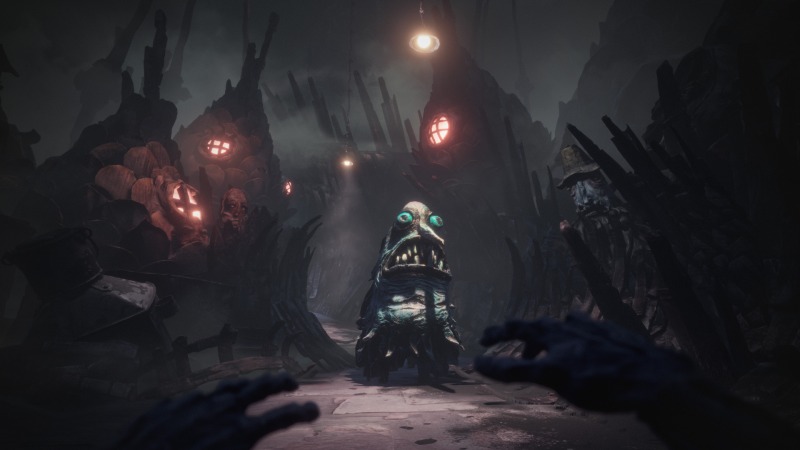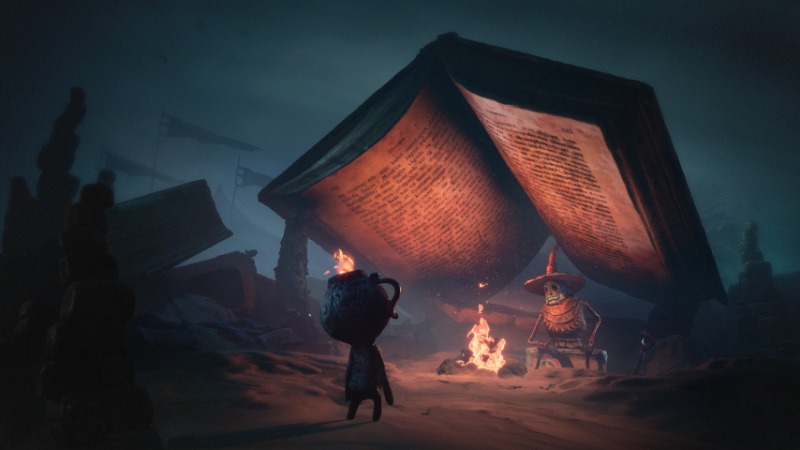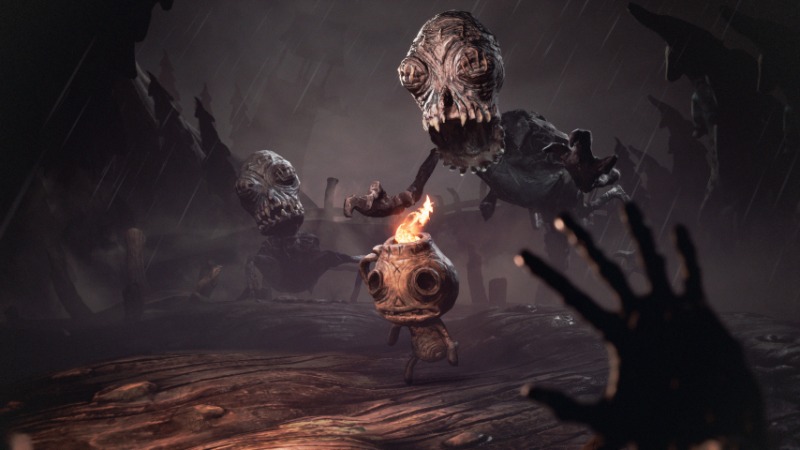The Midnight Walk Is A Mesmerizing Horror Game Brought To Life From Clay

From the Epic of Gilgamesh to the Bible, dirt, dust, and clay have frequently been portrayed as a fundamental building block of life. In Greek creation myths, the Titan Prometheus made humankind out of earth, sculpting us from water and mud before eventually gifting humanity technology in the form of fire. It’s a connection not lost on The Midnight Walk, a first-person horror-adventure game about the power of flame that’s quite literally made from clay: virtually every character and background prop was sculpted with clay before being digitally scanned into Unreal Engine 5.
Simply put, the results are stunning, a gothic, creepy-cute world populated by frightening creatures and adorable freaks like the game’s mascot, Potboy, whose crooked smile marks a visual style leaning into asymmetry and intentional imperfections. It’s a look that builds on the sometimes charming, often disquieting characters found in stop-motion films like Studio Laika’s Coraline or Tim Burton’s The Nightmare Before Christmas, while also channeling age-old myths and folklore as it sets you on a hero’s journey to bring fire back to the world. Along the way, you’ll make plenty of pit stops as you have Potboy help you solve puzzles, explore each locale, and run or hide from some genuinely unsettling critters. The main appeal is definitely the one-of-a-kind visual approach, but this isn’t just a digital art gallery.

The story begins with only a sentence of exposition as the Burnt One (the player character) stumbles out of their sarcophagus following “the end of the world.” While we eventually get hints about what’s going on and what this apocalypse entails, the setting is never overexplained, allowing it to maintain a well-considered sense of awe; it leaves space to speculate like you’re picking up bits and pieces from a partially remembered oral story.
And that sense of mystery and wonder only deepens as you take your first steps outside your former tomb and witness the view: an ominous blue-gray valley dotted with strange architecture, crooked trees, and what appears to be a massive, immobile head. Even if you’re not familiar with the deeply unusual way this setting was created, with real-world sculptors crafting most of this scenery, it will likely be obvious that there’s something different at work here, an unusual amount of tactile detail in every crooked ridge and off-kilter edge. These creations bend and squiggle like the wobbly outline of an expressionist painting, but these uncanny views don’t lessen the sense that you’ve been placed in a diorama alongside miniature horrors. Simply put, it never gets old to witness every particular of the backdrops, where real-world objects are repurposed into forlorn scenery, always maintaining the sense that the artist who forged this universe has long since abandoned their creation.
Before long, we find the weird little gremlin creature on the box art, a pot that sprouts legs and runs off until we feed him some coal to munch on. A few cryptic conversations with a bard and a two-headed soothsayer later, you and your new buddy Potboy are off on the Midnight Walk, which is both a literal road leading to Moon Mountain and also seems to be some sort of ritual involving fire and sacrifice.

But of course, this wouldn’t be much of a journey if this road were a straight one, and the Midnight Walk seems to have a mind of its own, diverting you towards troubled places that need a nudge in the right direction. You’ll visit frozen villages and cursed bogs, each locale tying into the game’s ancient influences by presenting these detours like one-off fables. While these stories are largely disconnected, they’re united in how they throw you into a place in media res, starting with a misleading introduction before having you piece together the whole truth.
There is a great mixture of tragedy and stagnation, as each place is thoroughly stuck in an unpleasant past. We witness the weight of parents passing their ambitions onto their children, mob violence, and unresolved colonial histories, with each tale finding a fairly nuanced resolution, even if it only ever feels like we’re just passing through each of these places instead of building strong bonds with those who live there. They’re a bit like old-school fairytales, except without the thinly-veiled intent of scaring children into obeying their parents.
-

-

-

-

-

-

-

-

-

-

-

-

-

-

-

-

-

-

-

-

-

-

-

-

-

-

-

-

-

-

-

-

-

-

-

-

-

-

-

-










































